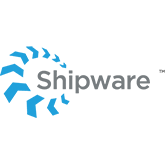
4 Steps to Issuing Multi-Carrier RFPs
by Shipware

Pricing from major carriers is the most aggressive it’s ever been and, as we enter 2023, will only continue to grow increasingly challenging for shippers.
Revenue-per-piece continues to climb as carriers announced rate increases earlier this fall for 2023. In addition, peak surcharges implemented during the height of the pandemic are still in effect despite many carriers acknowledging that volumes are down in their network.
With these cost pressures, many shippers are exploring (or are interested in exploring) options in addition to the major national carriers. Plenty of reliable and cost-effective alternatives exist in the marketplace, ranging from regional parcel carriers to postal consolidators to “gig”-type shipping networks.
In fact, with so many alternatives available, investigating them can be somewhat overwhelming at first. So, to help with the multi-carrier shipping search, we’re laying out four steps to take when issuing multi-carrier RFPs.
1. Find the right carriers
You’re probably thinking “of course this is the first thing to do,” but remember that what makes the right carrier for you is a combination of multiple factors.
- Service standards – Lightweight residential shippers, where transit time isn’t important to their customers, have a different set of carriers than a shipper whose customers expect their product in two days. Understanding your needs will allow you to focus on your carrier selection.
- Service area – Validate that your customers match where the carriers deliver. Most regional carriers do not service every single zip code in the states they service. Postal consolidators that use the USPS for final mile delivery can reach everywhere.
- System – An important question to ask in the vetting process is, “Does the carrier integrate with your shipping system?” Some systems are more widely adopted than others, so this can be a limiting factor in your multi-carrier shipping RFP.
- Operations – What, if anything, will change in your pickup process? Do you need to palletize? Use gaylords? Will the pickup times change? Who is picking up your shipments? While the process is generally smooth, clear communication with your operations team can prevent roadblocks down the road.
- Tracking – who is delivering your shipments? How will “WISMO” questions be answered? Do you take pictures of the delivery?
2. Provide the right data
For carriers to get you the best price, they need shipment-level detail. This is similar to your dealings with major carriers. Provide shipment dimensions, weight, origin/destination info, service used, and anything relevant (but not price-related). This makes the carriers confident in their pricing model, leading to more aggressive proposals.
3. Analysis
Once you get the proposals back, use that same shipment level detail to analyze their pricing. It can be challenging to get to an apples-to-apples comparison. Remember that some shippers will offer flat rates, some will offer zone-based pricing, some will have surcharges, and some won’t. Another item to be aware of is the maximum dimensions and weights that a carrier will accept.
A secondary analysis needs to be done as well. If a portion of your discount with your current carriers is based on revenue, then you need to determine if your discounts will get worse by moving a percentage of your business away. Depending on the structure of your agreement, this could be a negligible or a significant change, and, as such, you should investigate your agreement for minimum commitment clauses and other fine print clauses.
4. Decision
Now that your analysis is complete, you need to weigh your options. Remember the topics you considered when you put the original bidder list together, and use that to help determine the right fit for your profile.
Exploring alternative carriers doesn’t mean eliminating major carriers from your mix. On the contrary, they provide a valuable range of services. However, being strategic about what business you keep with them can allow this multi-carrier shipping exercise to be a win for everyone.
Consult with Shipware
Shipware’s team of pricing analysts and former carrier executives is uniquely equipped to help you on your carrier diversification journey. Their analysts can help you identify your ideal carrier mix based on your shipping and customer data, service needs, technology integrations, and cost reduction goals. Contact the Shipware team for a free assessment of your shipping program and begin exploring carrier alternatives.